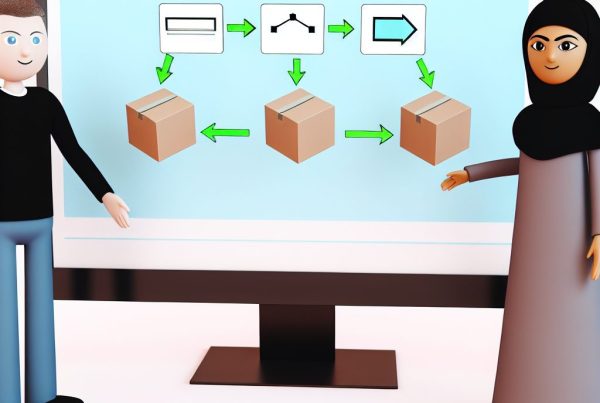What Is a Reorg Attack?
The cryptocurrency landscape is filled with innovative technologies and concepts, but it also harbors risks and vulnerabilities. One such risk is the reorg attack, a term that has gained traction in discussions about blockchain security. Understanding what a reorg attack is, how it occurs, and its implications is crucial for anyone involved in the cryptocurrency space.
Understanding Blockchain Basics
Before diving into reorg attacks, it’s essential to grasp the fundamentals of blockchain technology. A blockchain is a decentralized ledger that records transactions across many computers. This decentralization ensures that no single entity has control over the entire network, enhancing security and transparency.
Each block in a blockchain contains a list of transactions and is linked to the previous block, forming a chain. This structure makes it difficult to alter any information without consensus from the majority of the network participants.
What Is a Reorg Attack?
A reorg attack, short for “reorganization attack,” occurs when a malicious actor successfully creates a longer chain of blocks than the current chain, effectively “reorganizing” the blockchain. This can lead to the invalidation of previously confirmed transactions, allowing the attacker to double-spend coins or manipulate the blockchain for their benefit.
In essence, a reorg attack undermines the integrity of the blockchain by reversing transactions that were thought to be final. This can have severe consequences for users and the overall trust in the cryptocurrency ecosystem.
How Does a Reorg Attack Work?
To understand how a reorg attack works, it’s essential to know how blockchains achieve consensus. Most blockchains use a consensus mechanism, such as Proof of Work (PoW) or Proof of Stake (PoS), to validate transactions and add new blocks to the chain.

Here’s a simplified breakdown of how a reorg attack can occur:
- Mining Power: The attacker must possess a significant amount of mining power or stake in the network. In PoW systems, this means having a large number of mining rigs; in PoS systems, it involves holding a substantial amount of the cryptocurrency.
- Creating a Fork: The attacker creates a new chain that is longer than the existing chain by mining blocks faster than the rest of the network. This new chain contains altered transactions.
- Outpacing the Network: The attacker’s chain must outpace the legitimate chain, which requires significant computational resources or stake.
- Reorganization: Once the attacker’s chain becomes longer, nodes in the network will recognize it as the valid chain, leading to a reorganization of the blockchain. This process invalidates the transactions on the original chain.
Types of Reorg Attacks
Reorg attacks can be categorized into two main types:
- Soft Fork Reorg: This type of attack occurs when a temporary split happens in the blockchain, allowing for a reorganization without significant changes to the protocol. It can be less harmful but still poses risks to transaction integrity.
- Hard Fork Reorg: A hard fork reorg involves a more drastic change in the blockchain protocol, leading to a permanent split. This type of attack can create two separate chains, one of which may be controlled by the attacker.
Real-World Implications of Reorg Attacks
Reorg attacks can have serious implications for users and the broader cryptocurrency market. Here are some notable examples:
- Ethereum Classic (ETC) Attack: In January 2019, Ethereum Classic suffered a reorg attack that resulted in the double-spending of approximately $1.1 million worth of ETC. The attack highlighted vulnerabilities in smaller networks that lack sufficient hash power.
- Bitcoin Gold (BTG) Incident: In May 2018, Bitcoin Gold experienced a reorg attack that allowed attackers to double-spend over $18 million worth of BTG. This incident raised concerns about the security of cryptocurrencies with lower market capitalization.
Preventing Reorg Attacks
While reorg attacks pose a significant threat, there are several strategies that blockchain networks can implement to mitigate these risks:
- Increasing Hash Power: Networks can increase their overall hash power by encouraging more miners to participate, making it more difficult for a single entity to control the majority of the network.
- Implementing Checkpoints: Some blockchains use checkpoints to create fixed points in the blockchain that cannot be altered. This can help prevent reorgs from affecting confirmed transactions.
- Utilizing Finality Mechanisms: Protocols like Proof of Stake can implement finality mechanisms that ensure transactions are irreversible after a certain point, reducing the risk of reorgs.
Challenges in Mitigating Reorg Attacks
Despite the strategies available, mitigating reorg attacks is not without challenges:
- Decentralization vs. Security: Striking a balance between decentralization and security can be difficult. Increasing security measures may lead to centralization, which contradicts the core principles of blockchain.
- Network Size: Smaller networks are more susceptible to reorg attacks due to lower hash power. As a result, they may struggle to implement effective security measures.
- Community Consensus: Implementing changes to prevent reorg attacks often requires consensus from the community, which can be challenging to achieve.
FAQs About Reorg Attacks
What is the main goal of a reorg attack?
The primary goal of a reorg attack is to reverse transactions on the blockchain, allowing the attacker to double-spend coins or manipulate the ledger for personal gain.
Can reorg attacks happen on any blockchain?
Yes, reorg attacks can occur on any blockchain, but they are more common on smaller networks with lower hash power or staking participation.
How can users protect themselves from reorg attacks?
Users can protect themselves by choosing cryptocurrencies with robust security measures, staying informed about network updates, and using wallets that support multiple confirmations before considering transactions final.
Are reorg attacks illegal?
While reorg attacks are unethical and can lead to financial losses, they may not always be illegal, depending on the jurisdiction and the specific circumstances surrounding the attack.
Conclusion
Reorg attacks represent a significant threat to the integrity of blockchain networks and the trust of their users. Understanding how these attacks work, their implications, and the strategies for prevention is essential for anyone involved in the cryptocurrency industry. As the landscape continues to evolve, staying informed and vigilant is key to navigating the complexities of blockchain technology.
For more insights and updates on cryptocurrency news and price tracking, visit Bitrabo. Follow me on X, Instagram, and Threads for the latest in crypto.
Disclaimer: The information provided in this article is for educational purposes only and should not be considered financial advice. Always conduct your own research before making investment decisions.
The Crypto Watchlist of the Week 🔎
Subscribe to receive expert-curated projects with real potential—plus trends, risks, and insights that matter. Get handpicked crypto projects, deep analysis & market updates delivered to you.


